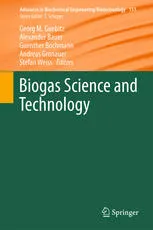The first dynamic model developed to describe anaerobic digestion processes dates back to 1969. Since then, considerable improvements in identifying the underlying biochemical processes and associated microorganisms have been achieved. These have led to an increasing complexity of both model structure and the standard set of stoichiometric and kinetic parameters. Literature has always paid attention to kinetic parameter estimation, as this determines model accuracy with respect to predicting the dynamic behavior of biogas systems. As sufficient computing power is easily available nowadays, sophisticated linear and nonlinear parameter estimation techniques are applied to evaluate parameter uncertainty. However, the uncertainty of influent fractionation in these parameter optimization procedures is generally neglected. As anaerobic digestion systems are currently increasingly used to convert a broad variety of organic biomass to methane, the lack of generally accepted guidelines for input characterization adapted to the simulation model’s characteristics is a considerable limitation of model application to these substrates. Directly after the introduction of the standardized Anaerobic Digestion Model No. 1 (ADM1), several publications pointed out that the model’s requirement of a detailed influent characterization can hardly be fulfilled. The main shortcoming of the model application was addressed in the reliable and practical identification of the model’s input state variables for particulate and soluble carbohydrates, proteins and lipids, as well as for the inerts. Several authors derived biomass characterization procedures, most of them dedicated to a particular substrate, and some of them being of general nature, but none of these approaches have resulted in a practical standard protocol so far. This review provides an overview of existing approaches that improve substrate influent characterization to be used for state of the art anaerobic digestion models.
